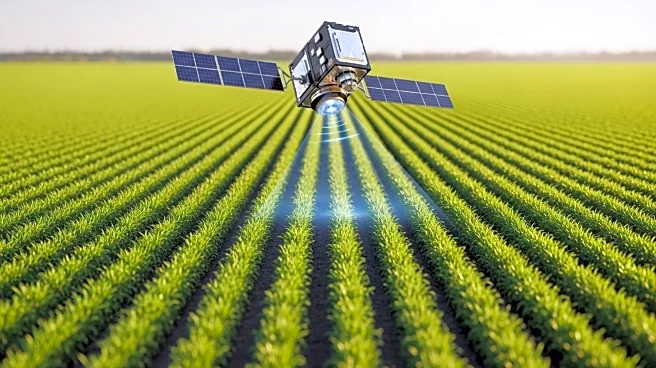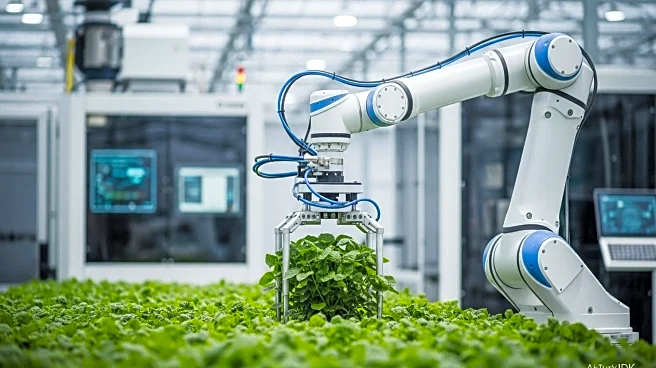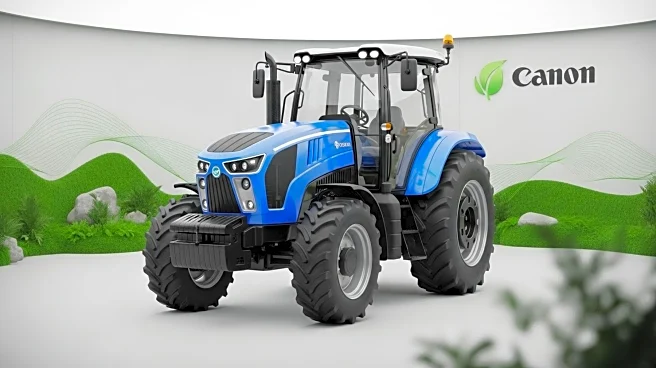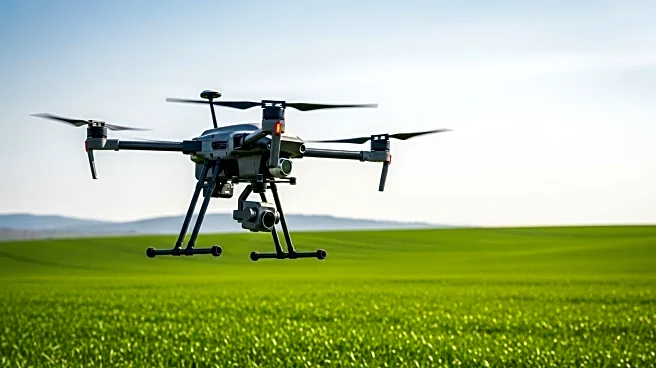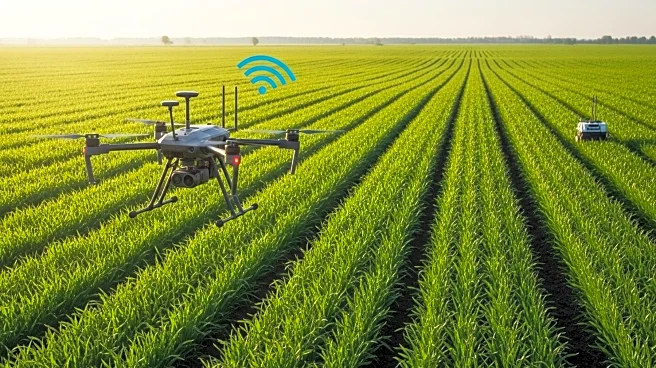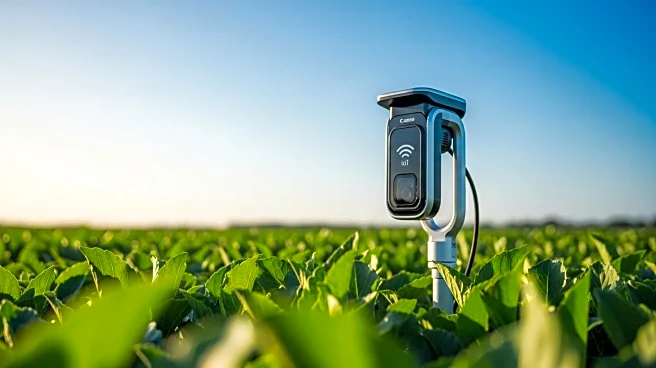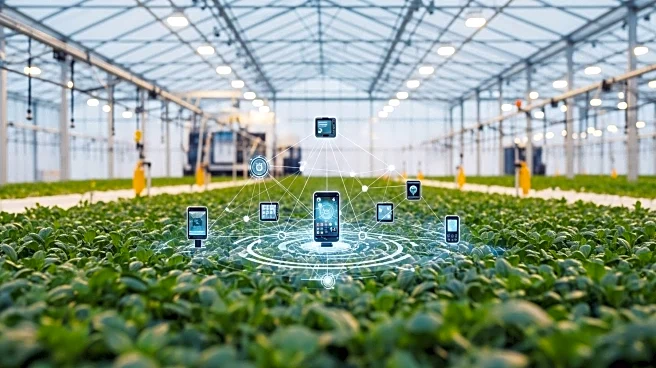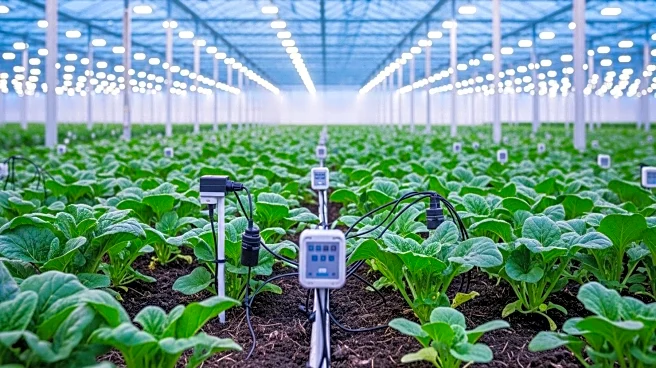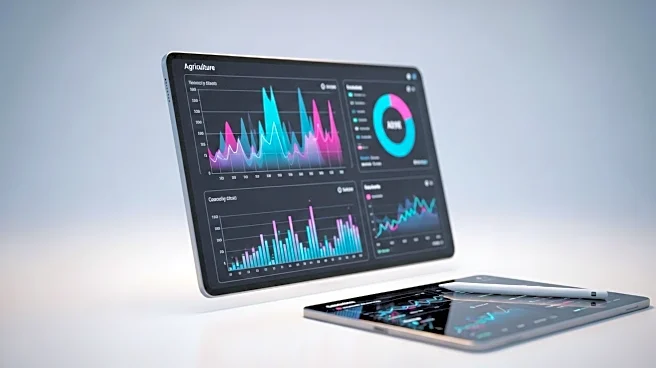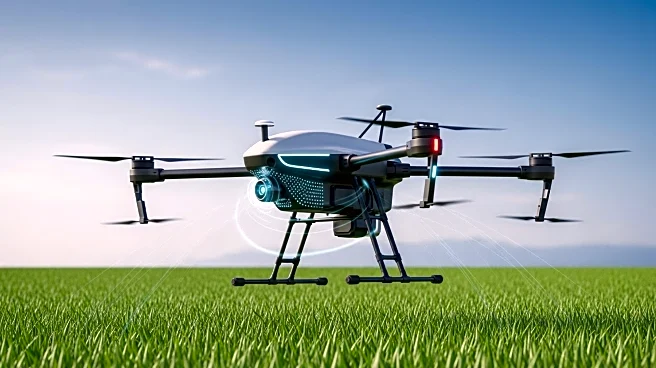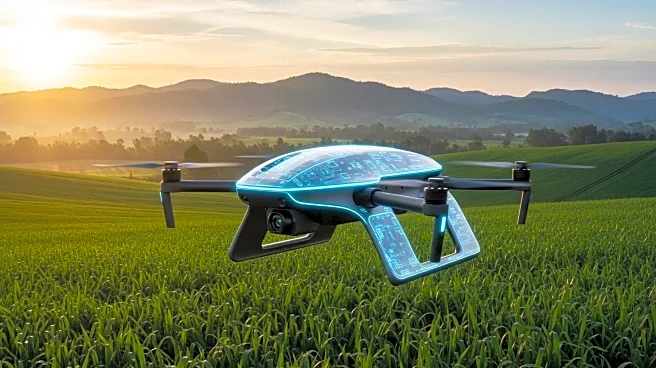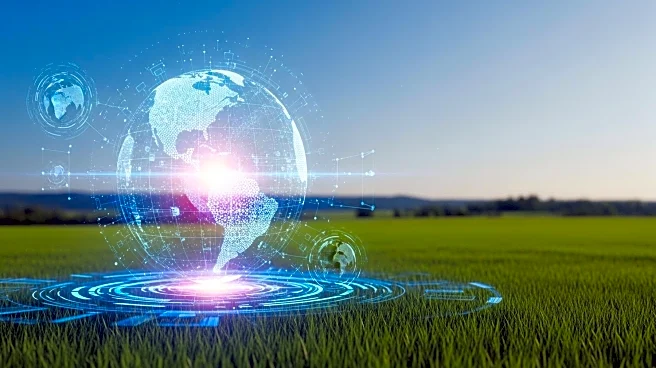What is the story about?
What's Happening?
Datacasting technology is transforming agriculture by providing real-time data access to farmers, even in remote areas with unreliable internet connectivity. By utilizing terrestrial radio and TV broadcast signals, datacasting enables the delivery of vital agricultural information such as weather updates, pest alerts, and market trends directly to farm management systems and devices. This innovation supports precision agriculture by optimizing farm inputs and resource management, thereby increasing productivity and sustainability. The global datacasting agriculture market is projected to reach over $350 million by 2025, with more than 60% of smart farms expected to adopt these technologies for real-time data exchange.
Why It's Important?
The adoption of datacasting technology in agriculture is crucial for bridging the digital divide, particularly in rural areas where internet connectivity is limited. By democratizing access to critical agricultural data, datacasting empowers smallholder and marginalized farmers, promoting inclusive digital transformation in farming. This technology enhances precision agriculture, leading to better resource management, reduced waste, and increased profitability. As the agricultural sector faces challenges such as climate change and food security, datacasting offers a scalable and cost-effective solution to improve decision-making and drive sustainable growth.
What's Next?
As datacasting technology continues to evolve, its integration with IoT and automation is expected to further enhance agricultural productivity. Future developments may include two-way datacasting, allowing farms to send back data for analytics and AI-powered recommendations. This advancement could lead to more personalized and efficient farming practices, strengthening rural resilience against climate risks and market volatility. Additionally, the expansion of datacasting infrastructure and standardization across the industry will be key to maximizing its impact and accessibility.
Beyond the Headlines
Datacasting technology not only addresses connectivity issues but also supports sustainability goals by optimizing resource use and reducing environmental impact. By providing real-time insights, it enables farmers to make informed decisions that contribute to better soil health and water savings. Furthermore, the technology's ability to deliver emergency alerts and market intelligence can help farmers mitigate risks and improve economic sustainability. As datacasting becomes more widespread, it has the potential to transform the agricultural landscape, fostering a more resilient and productive future.
AI Generated Content
Do you find this article useful?
